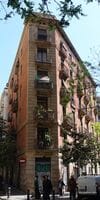The Old City of Barcelona (Spanish: Ciudad Vieja, Catalan - Ciutat Vella / Ciutat Vella) is the oldest district and historical center of Barcelona, located between the Mediterranean Sea and the Eixample district (L'Eixample, meaning New City).
The Old City of Barcelona is the administrative district of the city number 1 and consists of four subdistricts:
- The Gothic Quarter (Barri Gotic);
- El Raval;
- the maritime district of Barceloneta (La Barceloneta);
- Sant Pere, Santa Caterina and La Ribera (Sant Pere, Santa Caterina i la Ribera).
Subdistricts of the Old City of Barcelona on the map
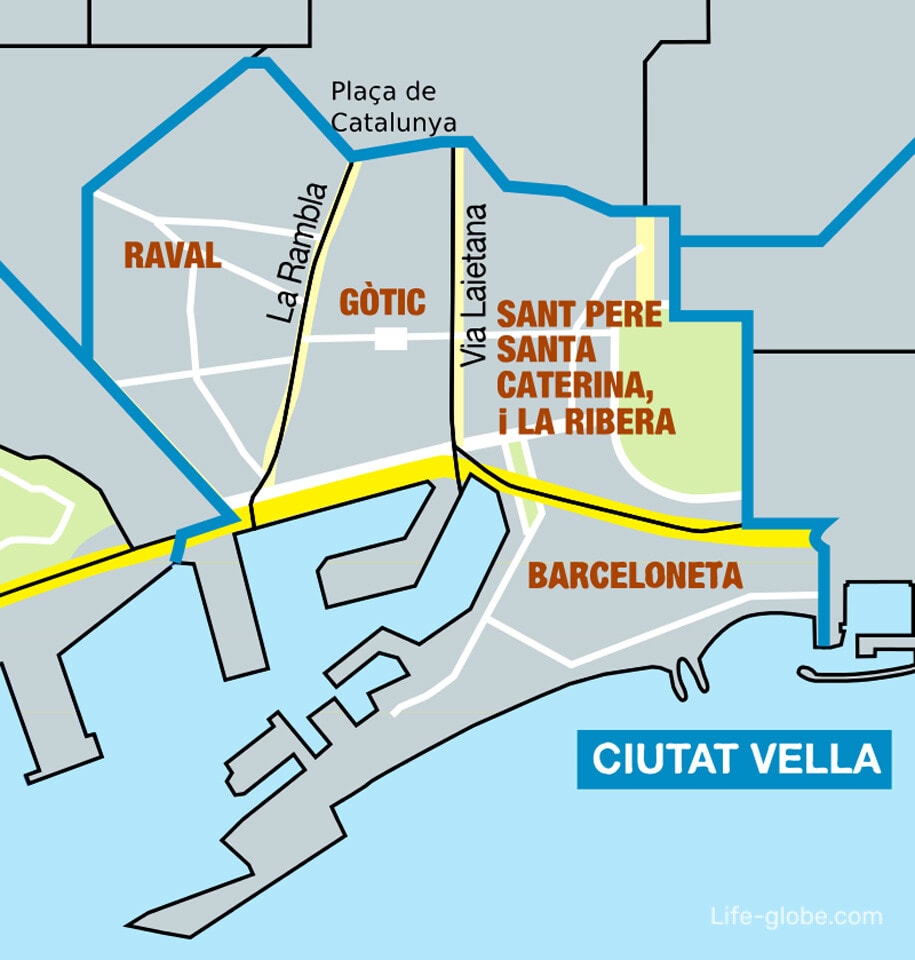
Barcelona's Old Town is one of the most popular tourist destinations of the city and its heart.
The Old Town is characterized mainly by small squares and narrow streets with dense buildings, including modern and historical buildings of different eras and styles.
In the old town there are attractions, including the cathedral, churches and former monasteries, palaces and markets, museums and theaters, the Arc de Triomphe, the large Ciutadella Park and several beaches in Barceloneta, as well as an abundance of shops, cafes, bars and restaurants, there are accommodation facilities (hotels, apartments)
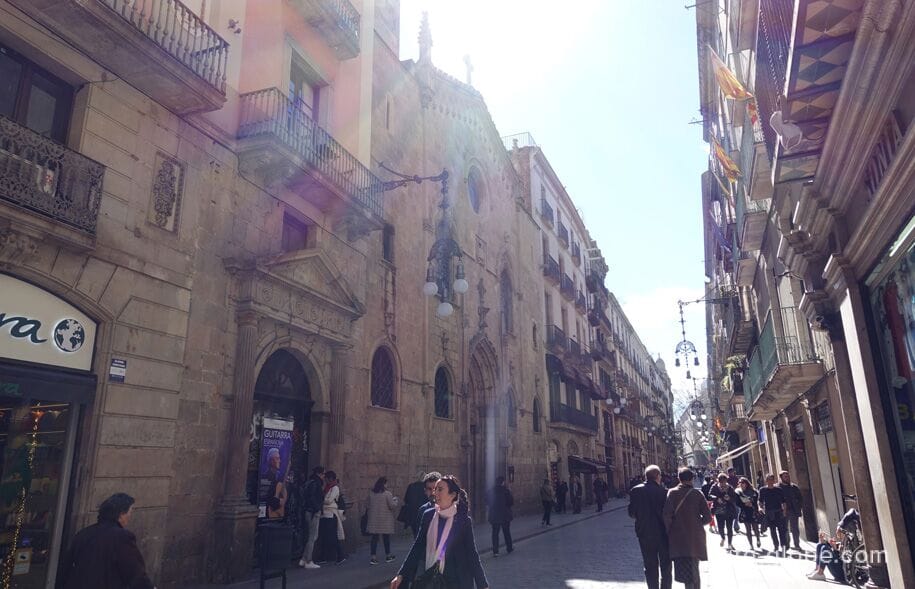
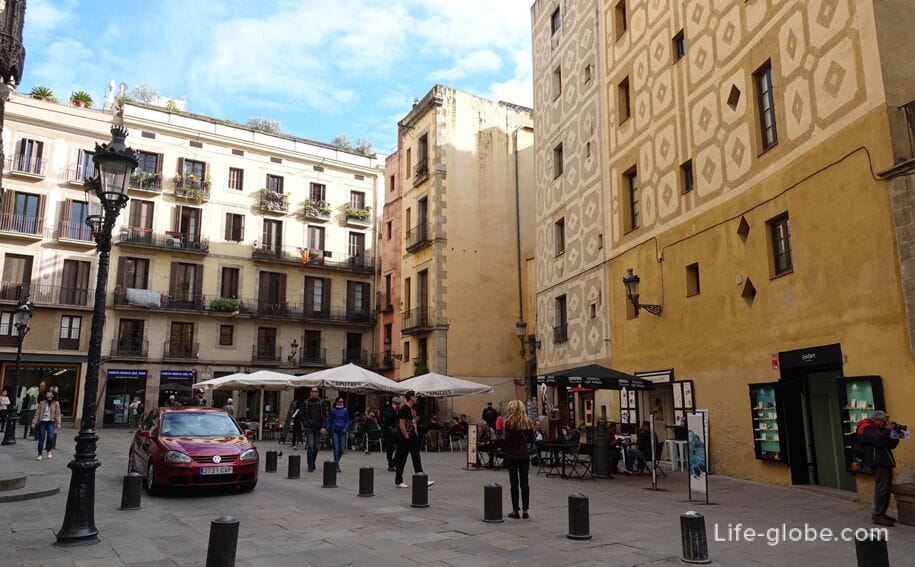
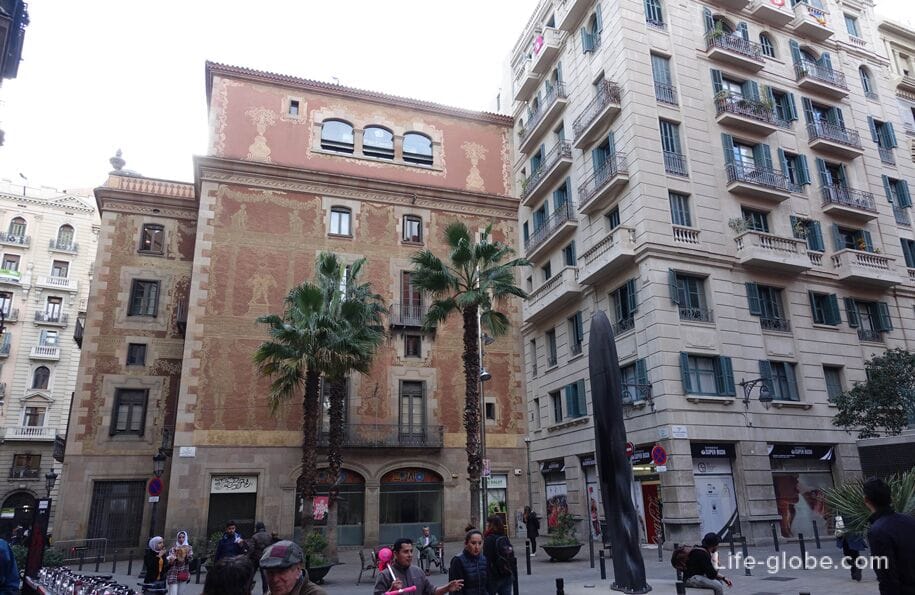


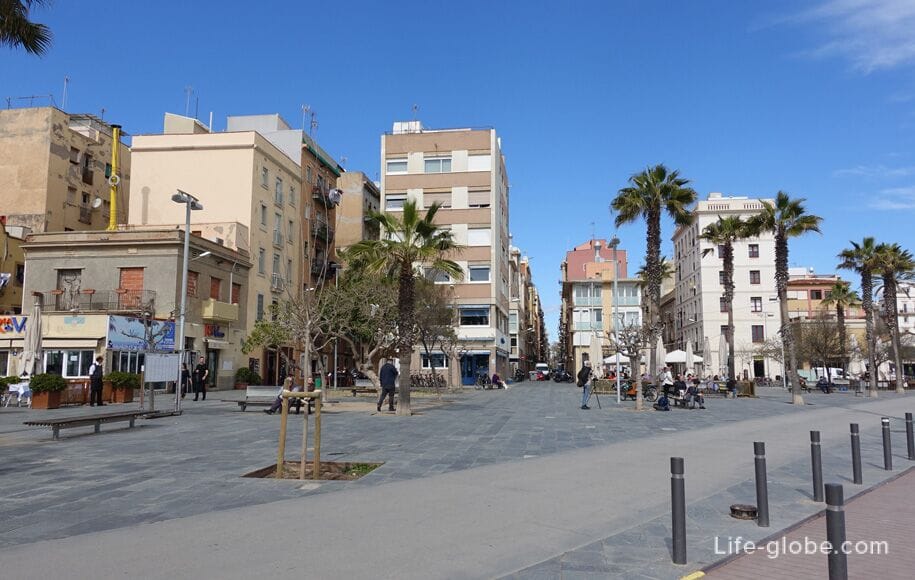
The main artery of the Old City is the famous walking street - La Rambla Boulevard, which stretches from the port of Barcelona to Plaza Catalunya and divides two subdistricts of the Old City: the Gothic Quarter (in the east) and El Raval (in the west).
At the beginning of Rambla Street, on the Place Portal de la Pau (Placa Portal de la Pau), there is a monument to the navigator and discoverer - Christopher Columbus (Monument a Colom). Inside the column there is an elevator on which you can climb to the observation deck, which offers views of the embankment and part of the city. More about La Rambla...


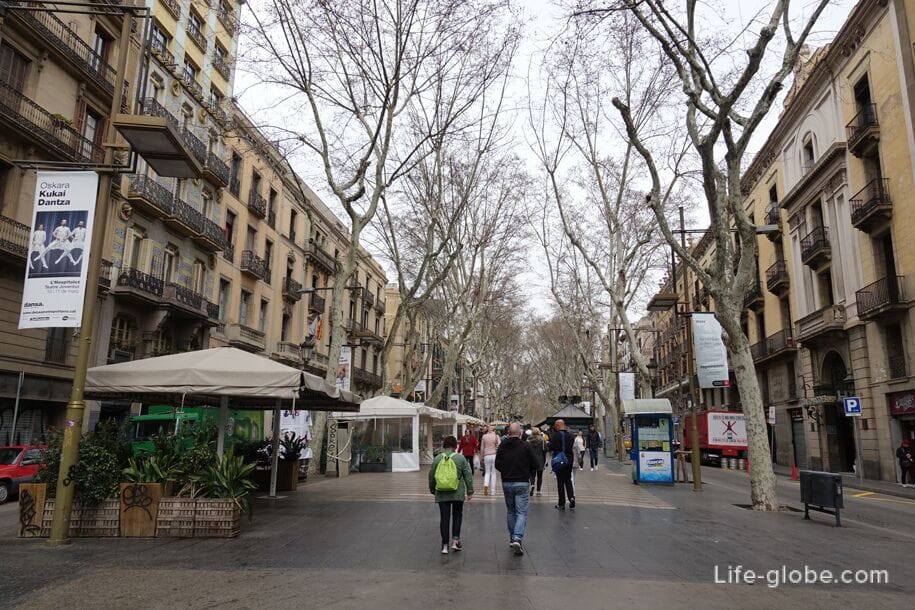
The main and most visited market not only in the Old Town, but also in the whole of Barcelona is the Boqueria or San Josep Market (Mercat de la Boqueria), located in the El Raval area near La Rambla Street.
The market has an area of more than 2,500 m2 and is completely made of glass and steel.
Currently, Boqueria is a gastronomic paradise! Everything is not there, ranging from the most famous vegetables and fresh cape, to overseas delicacies and southern fruits, from freshly baked bread and chocolate, to oysters, which will be opened right here and served to you with a slice of lemon. More about the Boqueria market...

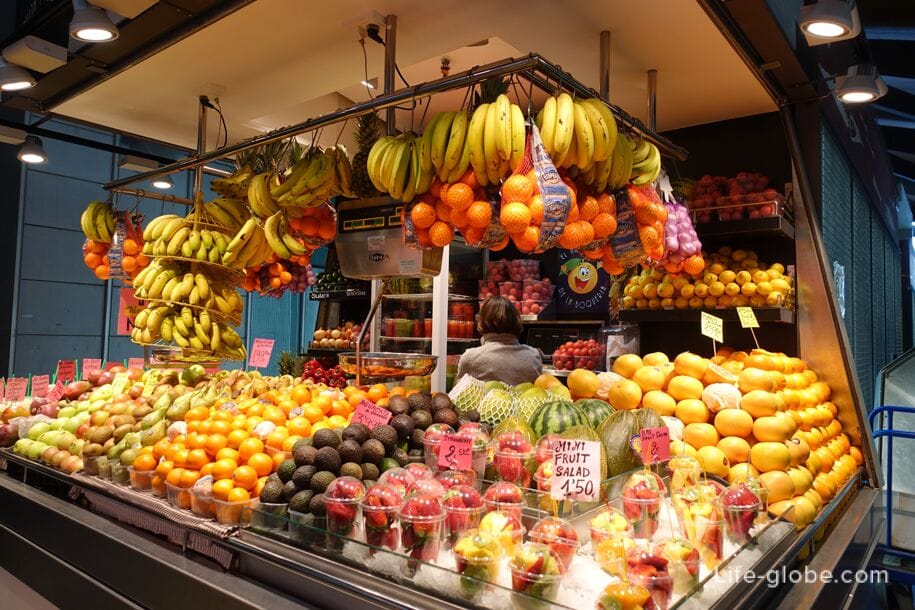
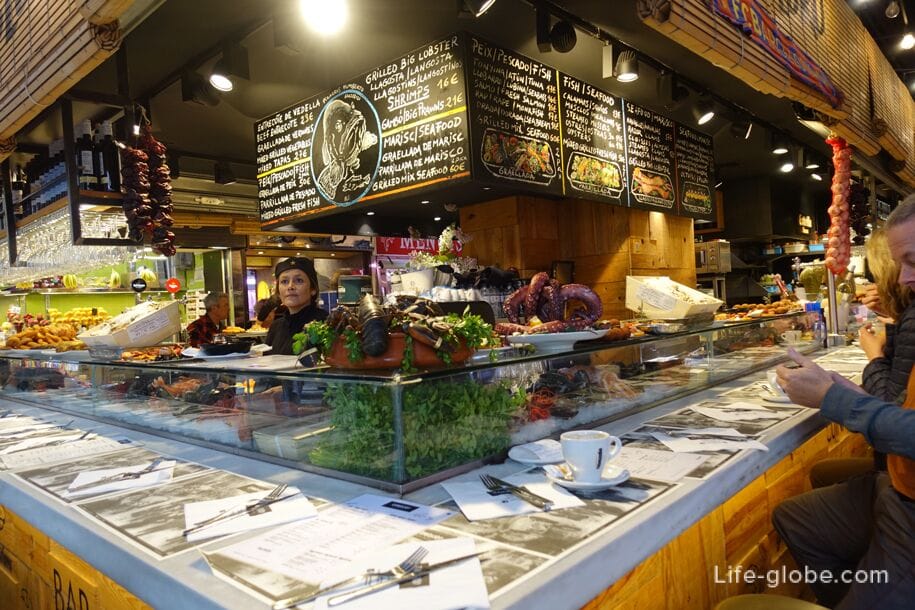
The largest green area of the old town is the Citadel Park or Ciutadella Park (Parc de la Ciutadella), located on the eastern outskirts of the subdistrict of San Pere, Santa Caterina and La Ribera.
The Citadel Park is a green area with an abundance of attractions, places for walking and recreation, a lake, fountains and sculptures - this is the first major urban park that appeared in Barcelona, the history of which dates back to the 18th century.
The most famous sights of the park are the Cascade Fountain, the lake, the Castle of the Three Dragons, the greenhouses, the Parliamentary Palace of Catalonia and the Church of Castilla de la Citadel.
Also within the park is the Barcelona Zoo. More about the Citadel Park...
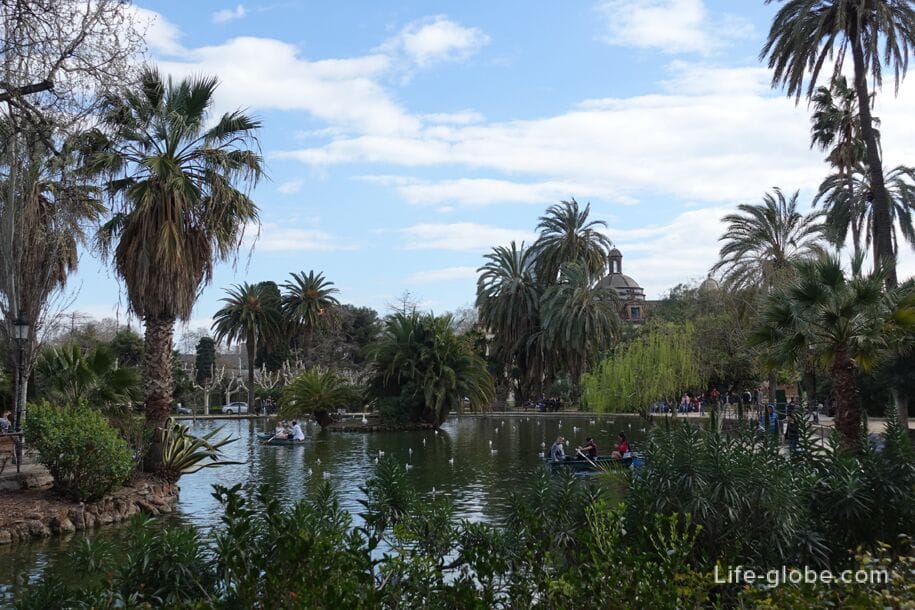
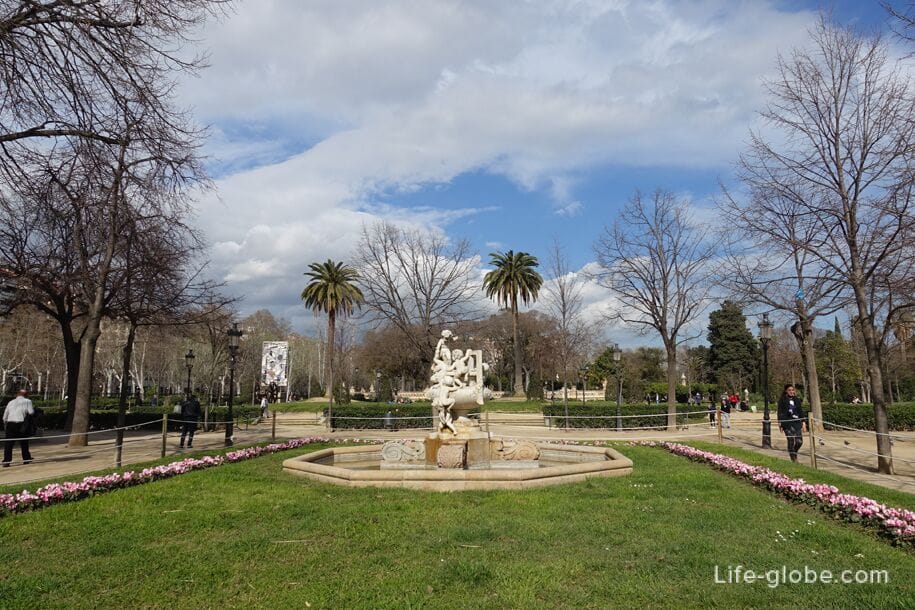

The beaches of Barcelona's old town are located in the Barceloneta area, where there are four beaches stretching along a single beach strip and smoothly turning into one another.
All beaches are quite wide and sandy, have excellent infrastructure. The sand is fine and pleasant to the touch. The color of the sand ranges from light gray to pale golden.
Along the beaches there is a beautiful embankment, perfectly equipped and suitable for recreation, walking and some sports. There are cafes and restaurants along the beaches.
These beaches are: Sant Sebastia (Platja de Sant Sebastià / Sant Sebastia beach), Sant Miguel (Platja de Sant Miquel / Sant Miquel beach), Barceloneta (Platja de la Barceloneta / Barceloneta beach) and Somorrostro (Platja de Somorrostro / Somorrostro beach). Learn more about all the beaches of Barcelona...

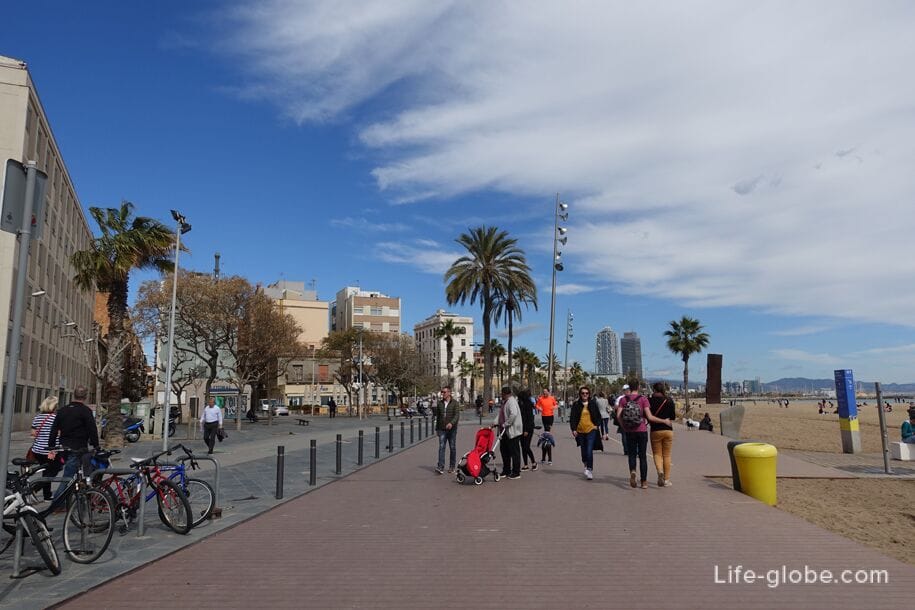
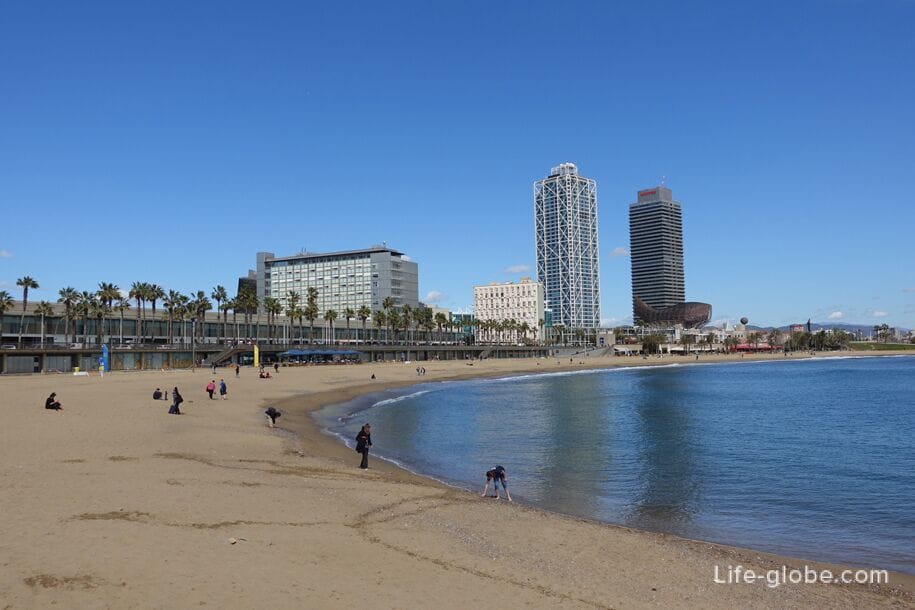
The highlight and hallmark of Sant Sebastia Beach is the glass sail - the famous 5-star Hotel W Barcelona
Near the hotel there is an observation deck (Mirador Mediterráneo W), which offers views of part of the coast of Barcelona. There is also a small park (Little Park) and Marina Vela Barcelona marina.
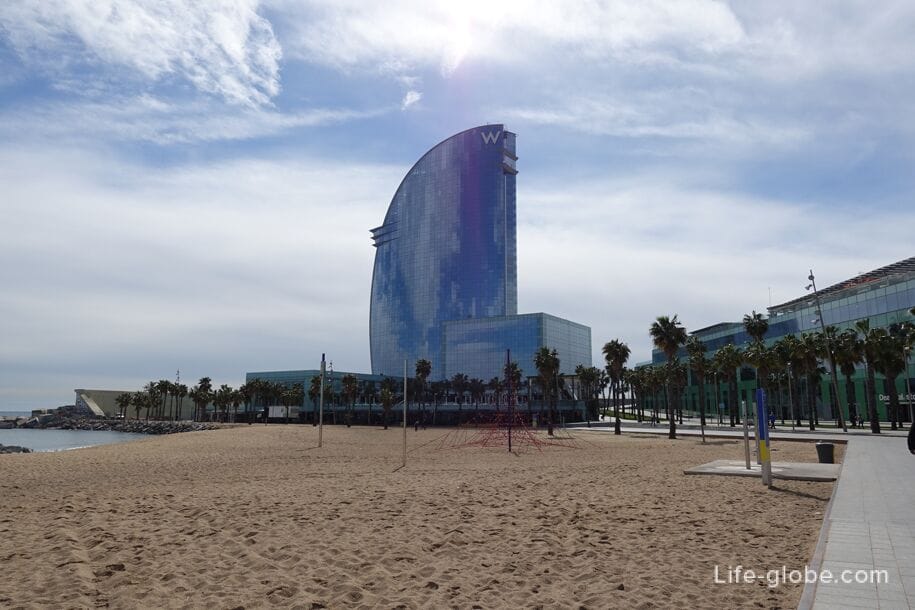
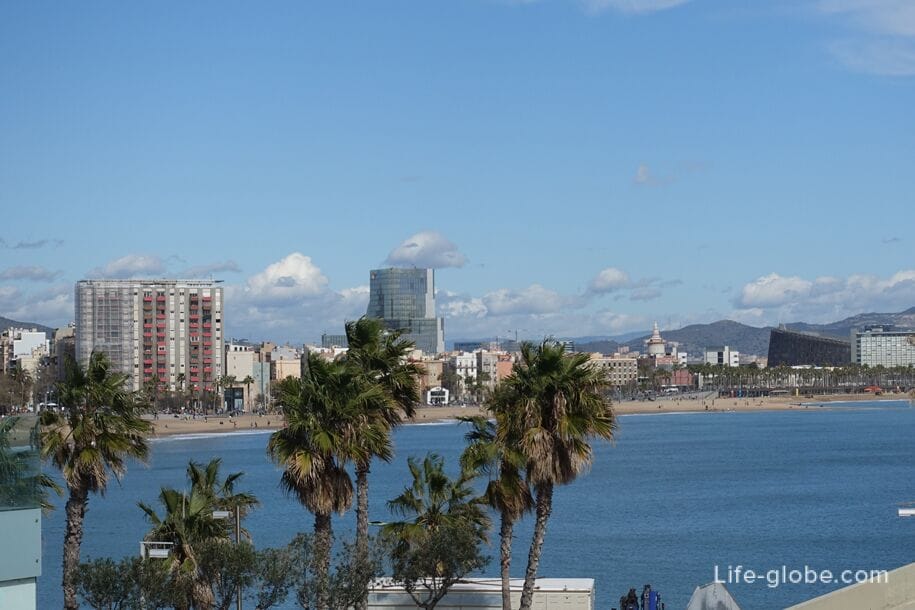
The Cathedral of Barcelona - the Cathedral of the Holy Cross and Saint Eulalia, also known as the Cathedral of Barcelona (Catedral de Barcelona / Catedral de la Santa Creu i Santa Eulalia), is located in the Gothic Quarter, is a Gothic cathedral of the 13th-15th centuries and is the residence of the Archbishop of Barcelona.
The current cathedral was built on the foundations of a primitive Paleochristian basilica and a later Romanesque cathedral.
The facade of the cathedral and the towers were renovated in the late 19th and early 20th centuries with many elements in the Gothic style.
Entrance to the cathedral is paid. An elevator takes you to the cathedral's rooftop terrace, which offers panoramic views of part of Barcelona's old town.

The old seaport of Barsleona - Port Vell (Port Vell), is located in the subdistricts of Barceloneta and the Gothic Quarter.
The old port is one of the popular places for walking and relaxing. You can take boat trips from the port.
The port is notable for: the sea embankment, the pier, the old building of the port administration, the shopping center "Maremagnum" and the large aquarium L'Aquàrium. Learn more about the seaport of Barcelona...

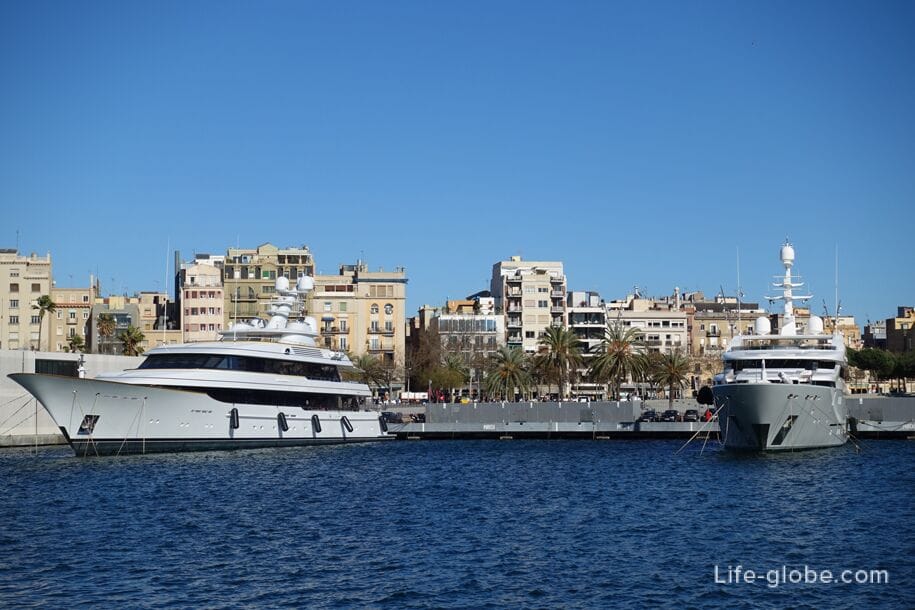
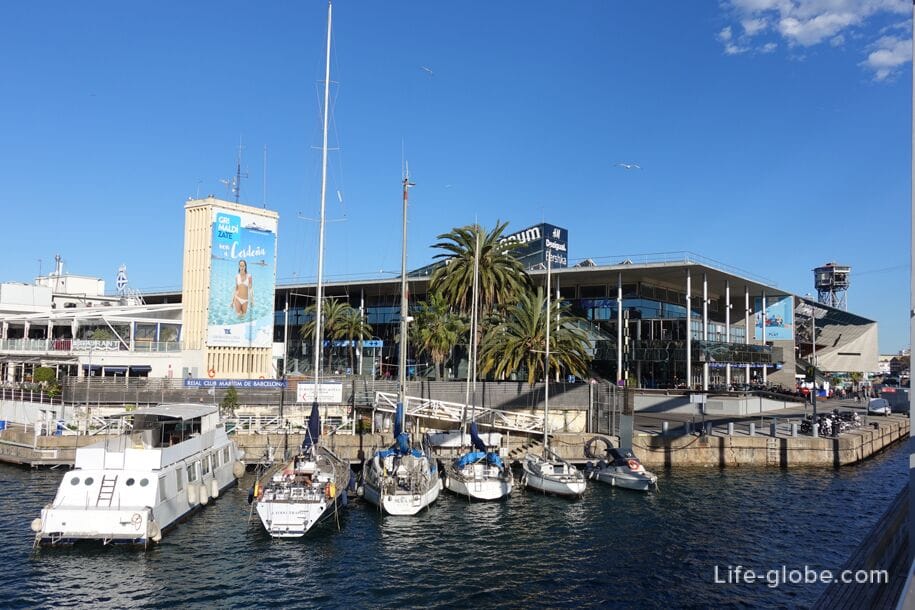
Barcelona's Gothic Quarter
The Gothic quarter covers the oldest parts of Barcelona, includes the remains of the Roman wall, famous medieval sights of the city, as well as churches, squares and museums. However, most of the buildings and a number of iconic Gothic buildings do not belong to the Middle Ages, but date from the 19th - early 20th centuries.
In addition to the Cathedral , the Gothic Quarter is notable for:
- the remains of Roman and medieval walls and defensive towers that once surrounded the city of Barsino, which are adjacent to the Cathedral.
Within the walls is the Archdeacon's house (Casa de Ardiaca / Casa de lArdiaca), built in the 12th century, and subsequently underwent several modifications. You can go to the patio;
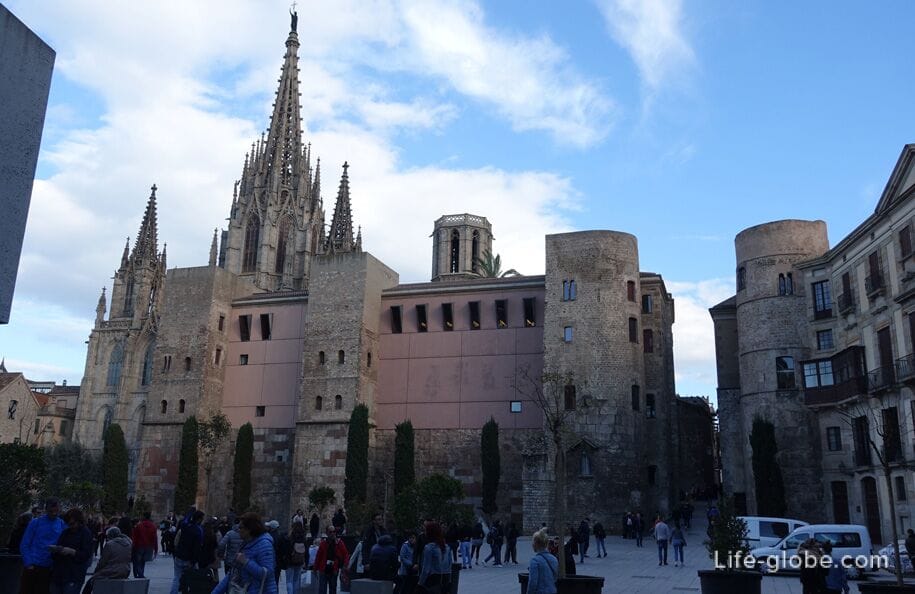
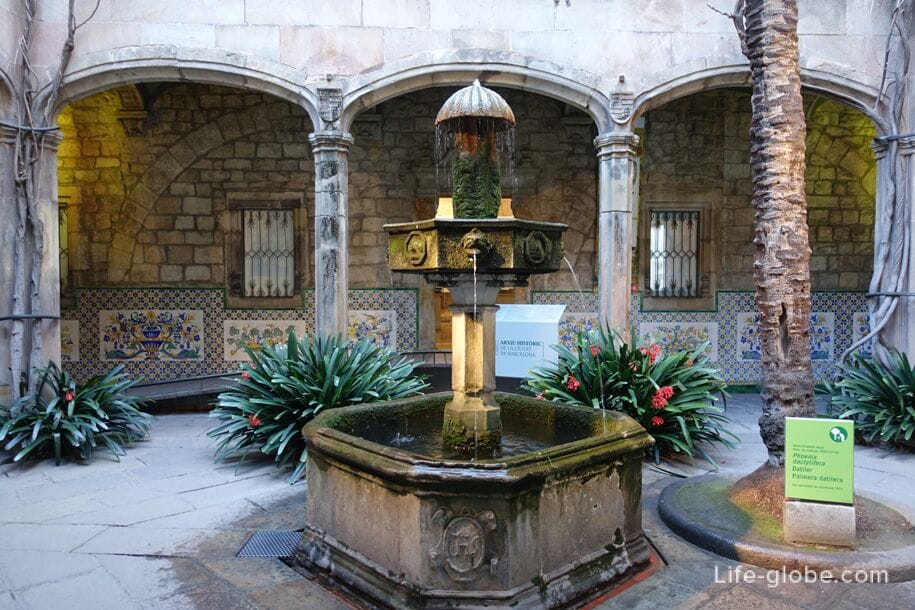
- The Gothic Bridge (Pont Gotic / Pont del Bisbe) is a hinged openwork bridge built in 1928, spanning Carrer del Bisbe Street and connecting two buildings.
This is one of the iconic places of the Gothic Quarter and one of the most popular and photographed places in Barcelona;
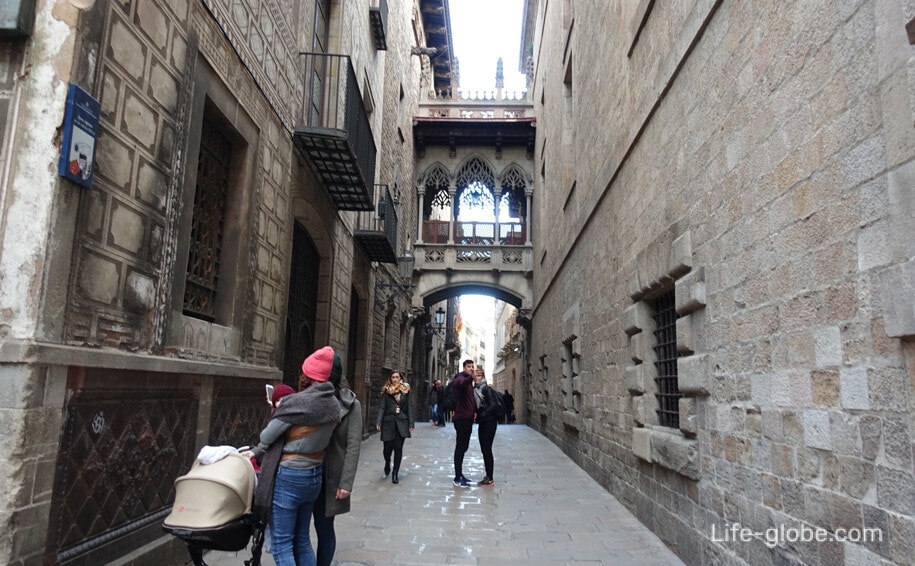
- The Royal Palace (Reial Major Palace) is the former residence of the Counts of Barcelona and the Kings of Aragon, which is a complex consisting of three buildings and a watchtower of King Martin.
The complex of the Royal Palace houses the Historical Museum of Barcelona with underground archaeological excavations of the ancient Roman city of Barsino. Temporary exhibitions are held in a number of rooms. More about the Royal Palace...

- The Church of Santa Maria del Pi or the Basilica of St. Mary (Basílica de Santa Maria del Pi) is a Gothic cathedral of the 14th century.
On the main facade of the church there is a large Rose window, which is an exact copy of the original 1940 window, which was destroyed in a fire in 1936. Below the window is the Gothic arch of the main entrance.
In the basilica there is an opportunity to visit the museum premises, including the treasury of the basilica, as well as the crypt, the garden and the bell tower, which offers views of part of Barcelona. More about St. Mary's Church...
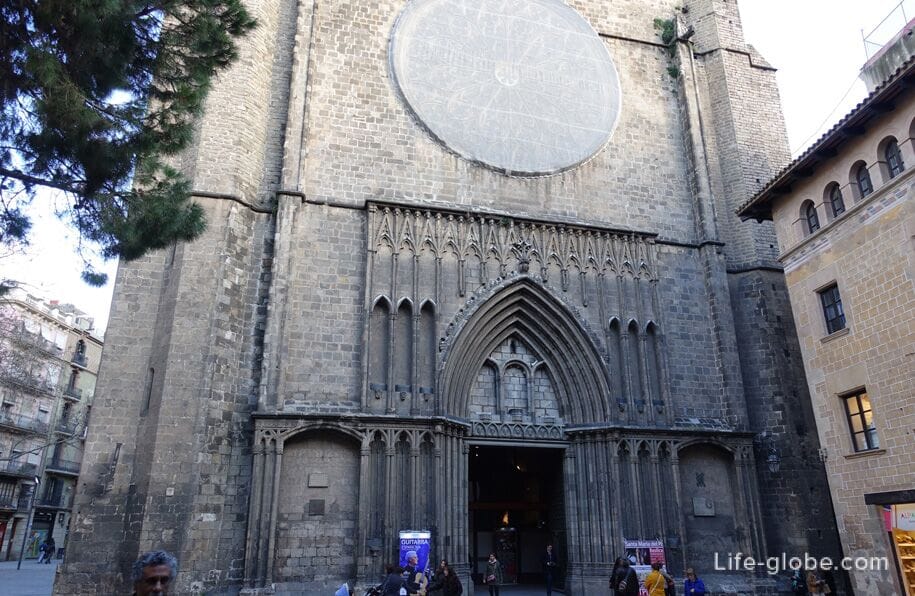
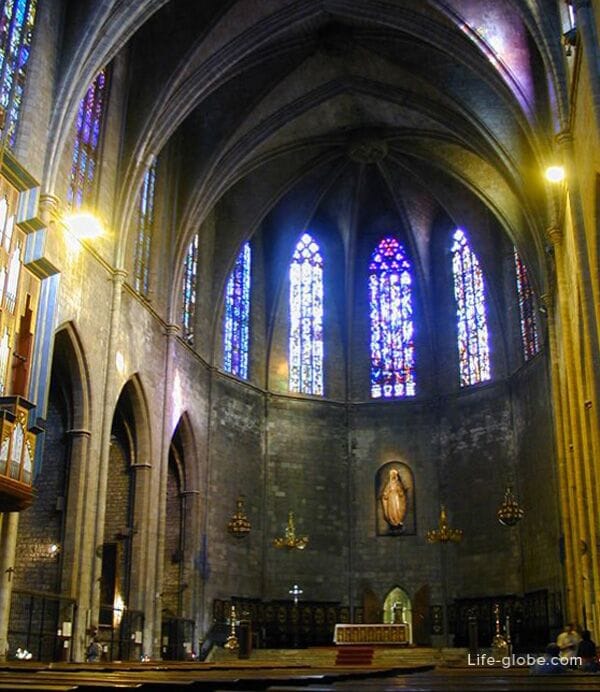
- St. James's Square or St. Jaume (Plaça de Sant Jaume), where there are:
- The historic Palace of the Government of Catalonia (Palau de la Generalitat de Catalunya) - Generalitat is one of the few buildings that has been functioning as a government residence for many years and still functions;
- The City Hall of Barcelona (Casa de la Ciutat / Casa de la Ciutat), the construction of which took place over several centuries. For this reason, the palace has a mixture of styles. More about St. James' Square...
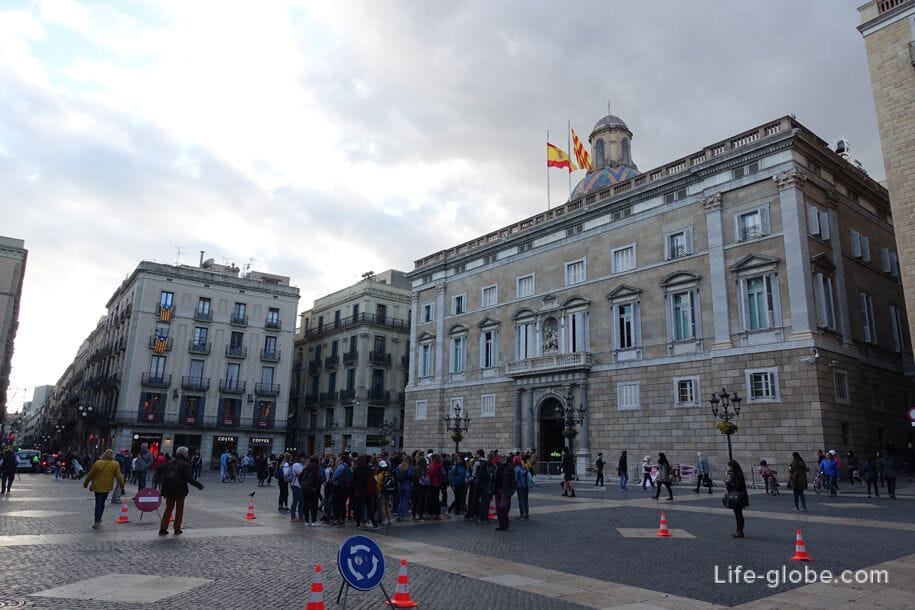
- The Royal Square (Plaça Reial) is one of the most famous squares and a landmark of Barcelona.
The lampposts in the square were designed by Antonio Gaudi. Learn more about Barcelona's Gothic Quarter...
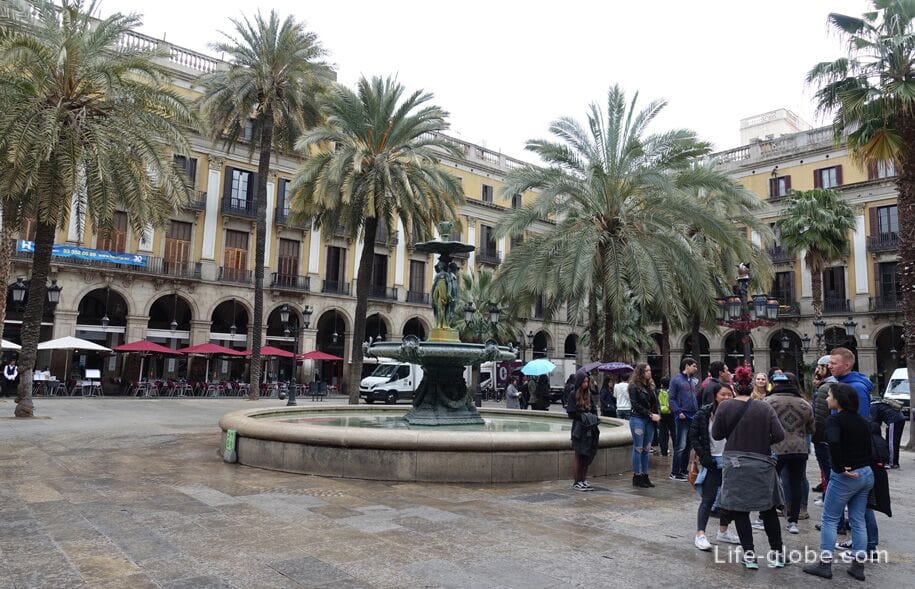
Barceloneta
Barceloneta or Little Barcelona (La Barceloneta) is a popular seaside area of the city and a relatively new part of the old city of Barcelona, which originated as a fishing village in the 18th century.
At its core, Barceloneta attracts with beaches and an embankment.
Also in the area are:
- The Museum of the History of Catalonia (History Museum of Catalonia), located in the building of the former port warehouses - the only building of the Old Port of Barcelona, built in 1881, which has survived to this day.
The museum contains a permanent exhibition telling about the history of Catalonia from antiquity to the present, including the era of dictatorship and modern democracy. In addition, the terrace of the museum cafe offers views of the port and the surrounding area;

- The Lighthouse Tower or Clock Tower (Torre del Rellotge Barceloneta), located on the Fishermen's Pier (Moll de Pescadors).
The lighthouse was built in 1772 on the fishing pier and worked until the middle of the 19th century. When the port was upgraded, the use of the lighthouse became obsolete. To preserve the main base, the tower was converted into a clock in the middle of the 19th century.;
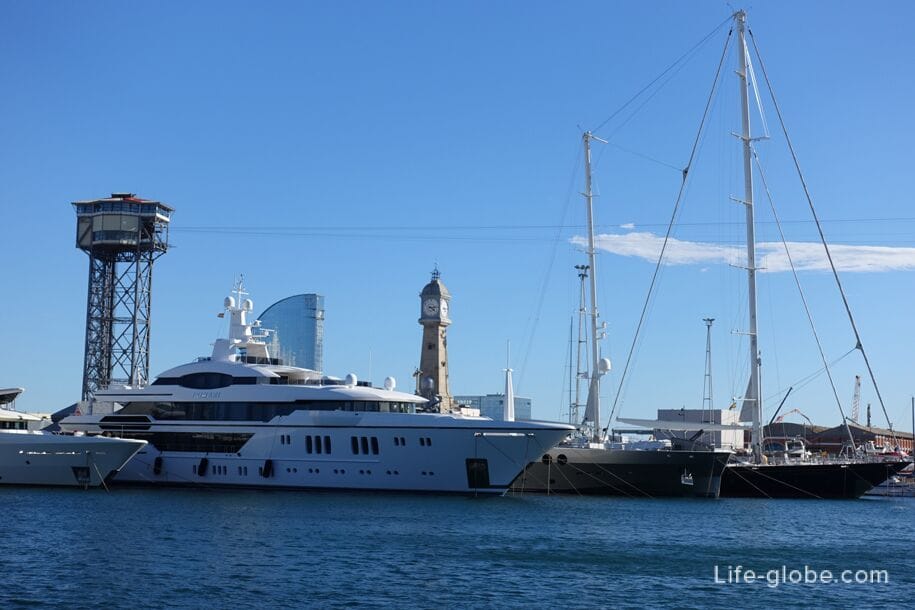
- San Sebastian Tower, 78.4 meters high - the tower of the cable car connecting Barceloneta with Montjuic Mountain (Montjuic Fortress);
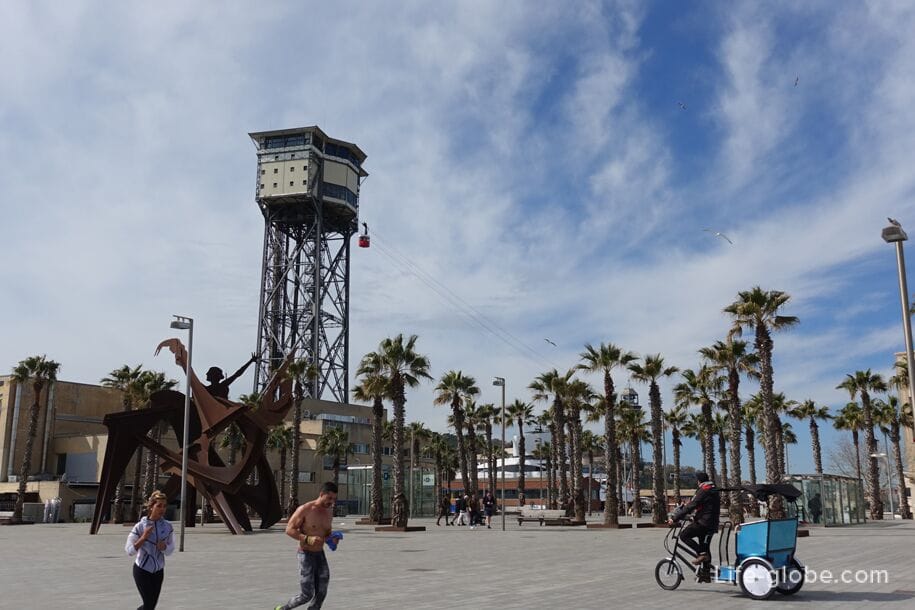
- also: the Church of St. Michael at the port (San Miguel del Port / Esglesia de Sant Miquel del Port), the Barceloneta Market (Mercat de la Barceloneta) and the Barceloneta Park (Parque de la Barceloneta) with a water tower. More about Barceloneta...

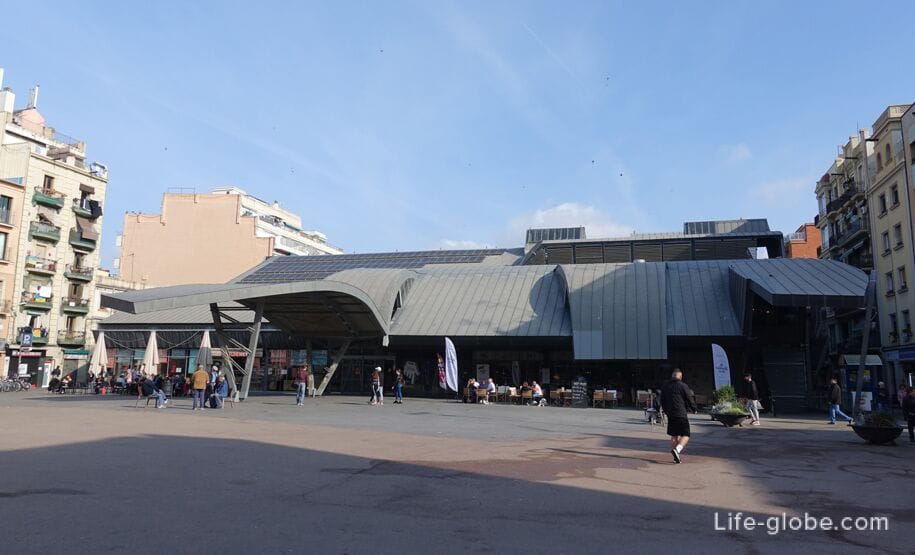
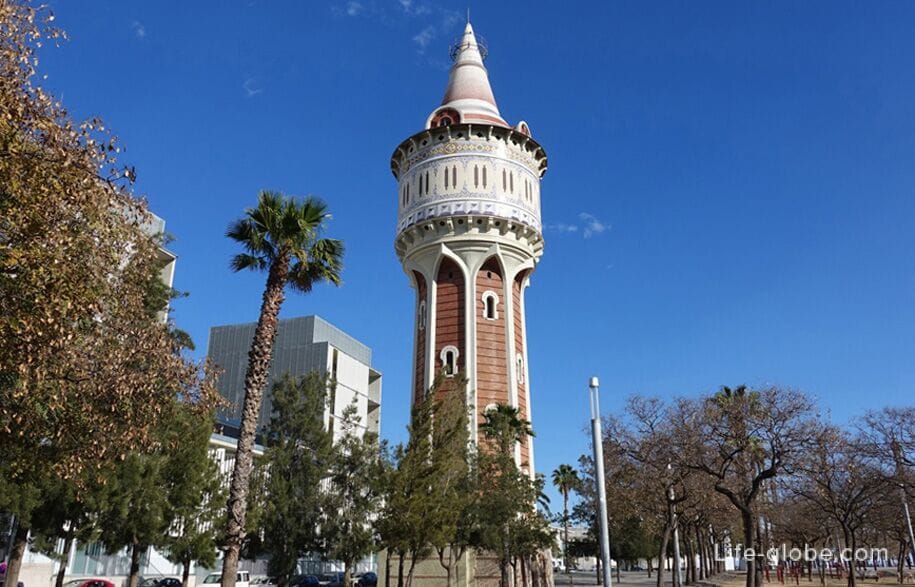
Subdistrict of San Pere, Santa Caterina and La Ribera
The subdistrict is formed by three small historical quarters:
- Sant Pere, named after the monastery of Sant Pere de le Puelles;
- Santa Caterina, located in the center of the subdistrict and where the market of the same name is located;
- La Ribera, many of the buildings of which date back to the late Middle Ages. It was a rich quarter in the 13th-15th centuries, then it was on the seashore, and the area that is today called Barceloneta was still an island.
The main attractions of the subdistrict are:
- The Monastery of Sant Pere de les Puelles (Parroquia de Sant Pere de les Puelles) is a 10th-century Benedictine monastery in Romanesque / Gothic style;

- The Palace of Catalan Music (Palau de la Música Catalana) is a concert hall designed in the style of Catalan Art Nouveau by architect Luis Domenech y Montaner;
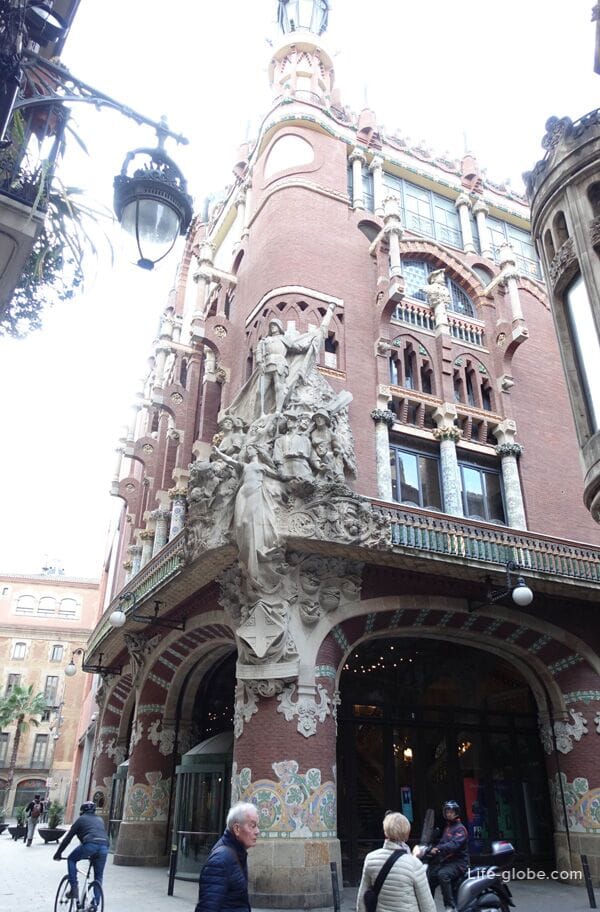
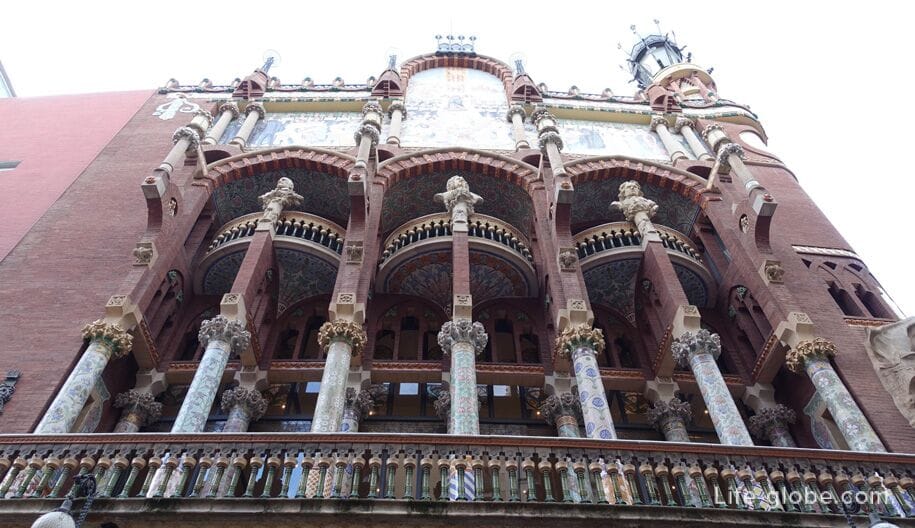
- The Arc de Triomf Barcelona (Arc de Triomf Barcelona) is one of the most famous monuments of the city, erected as the main entrance of the 1888 World's Fair, held in Ciutadella Park. Learn more about the Arc de Triomphe...

- monument to the former mayor of Barcelona, Francesco Rius i Taulet (Estàtua de Francesc Rius i Taulet), located near the Arc de Triomphe;

- "Born Market", now transformed into the El Born Cultural Center (El Born Centre de Cultura i Memòria), which houses an archaeological area with the remains of houses and streets of Barcelona, from the Roman period to the beginning of the 18th century, as well as workshops, souvenir shops and several shops. More about the Born market...
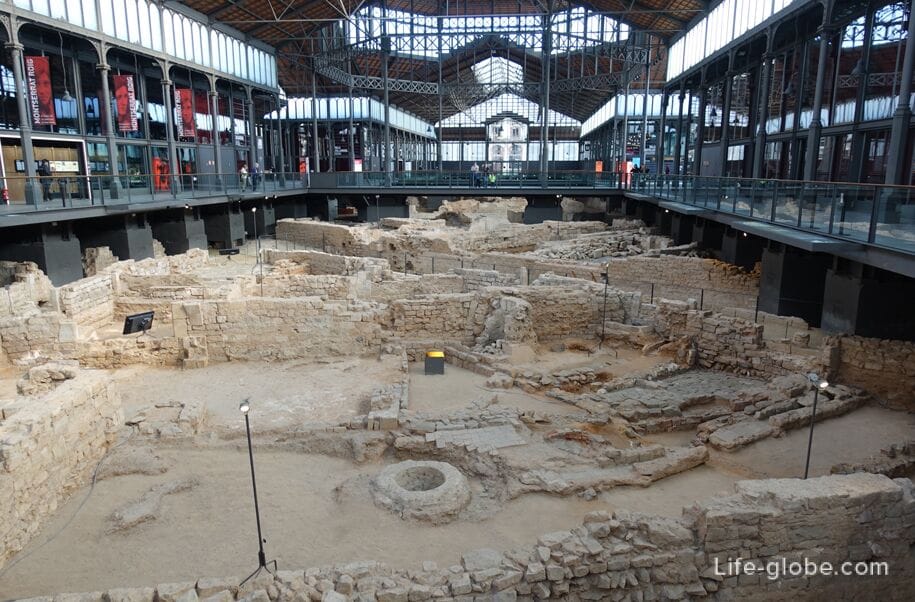
- The Basilica of Santa Maria del Mar (Basílica de Santa Maria del Mar) is an impressive church built between 1329 and 1383 at the height of the Kingdom of Aragon and is an example of Catalan Gothic with purity and unity of style;
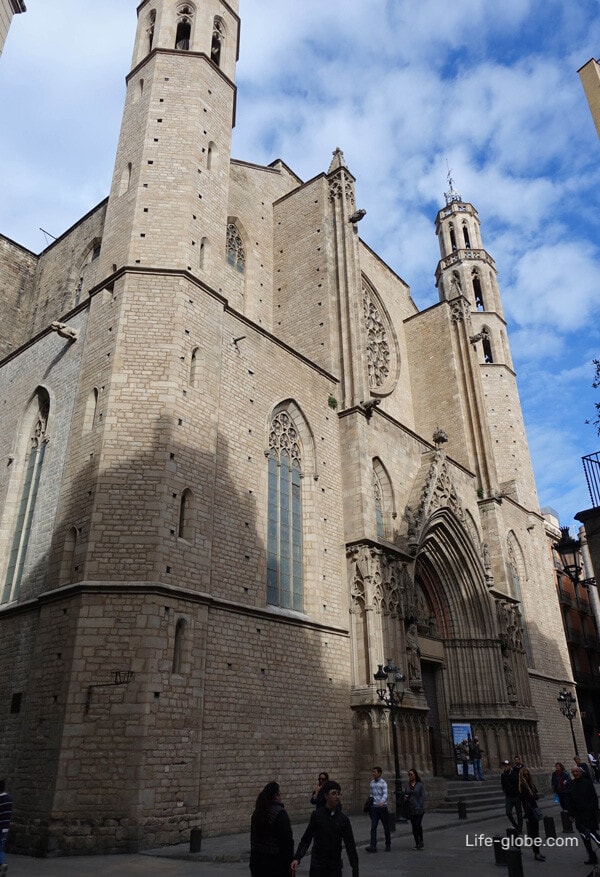

- The Picasso Museum (Museu Picasso de Barcelona), which houses one of the most extensive collections of works of art by the Spanish artist of the 20th century Pablo Picasso. More about the subdistrict of San Pere, Santa Caterina and La Ribera...
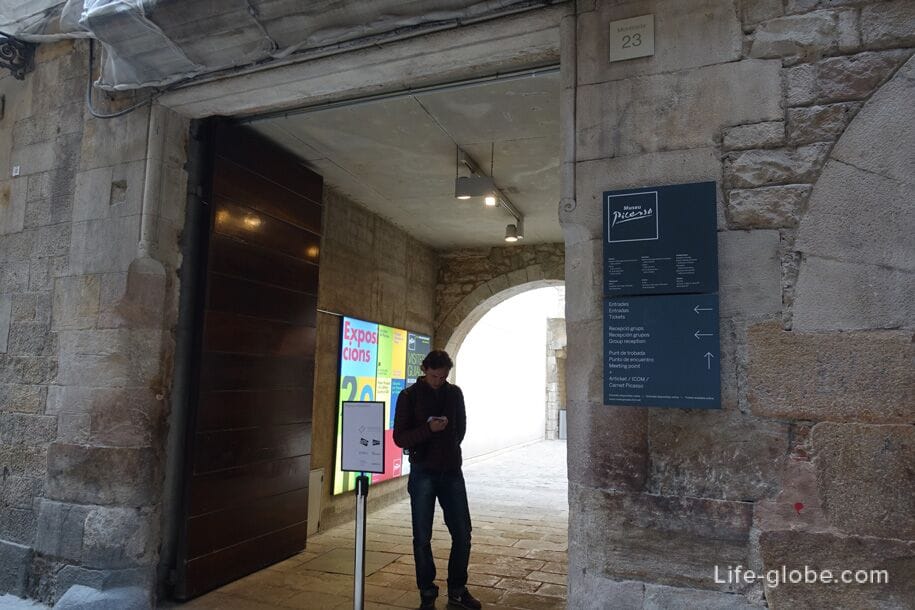
El Rawal Subdistrict
El Raval can rightly be called the cultural center of historic Barcelona.
There are theaters in the area, the most famous of which are: the Bolshoi Theater Liceo (Gran Teatre del Liceu), the Theater Raval (Teatre del Raval) and the theater Romea (Teatre Romea).
The area is also notable for cultural centers and several large museums.
Main sights of El Raval:
- old city wall with the medieval Portal de Santa Madrona gate (Portal de Santa Madrona), which are part of Maritime Museum of Barcelona.
The Maritime Museum is located in the Gothic building of the Royal Shipyards of Drassanas, an architectural monument of the 14th century.
The museum tells about the history of navigation of the Spanish fleet from the time of the Catholic monarchs to the present day. The museum presents galley figures, navigation instruments, weapons, documentary evidence of the discovery of America, models of caravels and galleys, an atlas of 1493, etc.;


- The Palace of Guell (Palau Güell) is a former residential building in Barcelona, which was one of the first works of the Spanish architect Antonio Gaudi.
The palace was built in 1886-1890 as a mansion for the Catalan industrialist Eusebi Guell.
The interior spaces of the house are concentrated around the main hall, which once served for receiving guests from high society and holding concerts.
Today in the palace you can visit the rooms located on several floors, as well as the basement and roof. More about the Guell Palace...
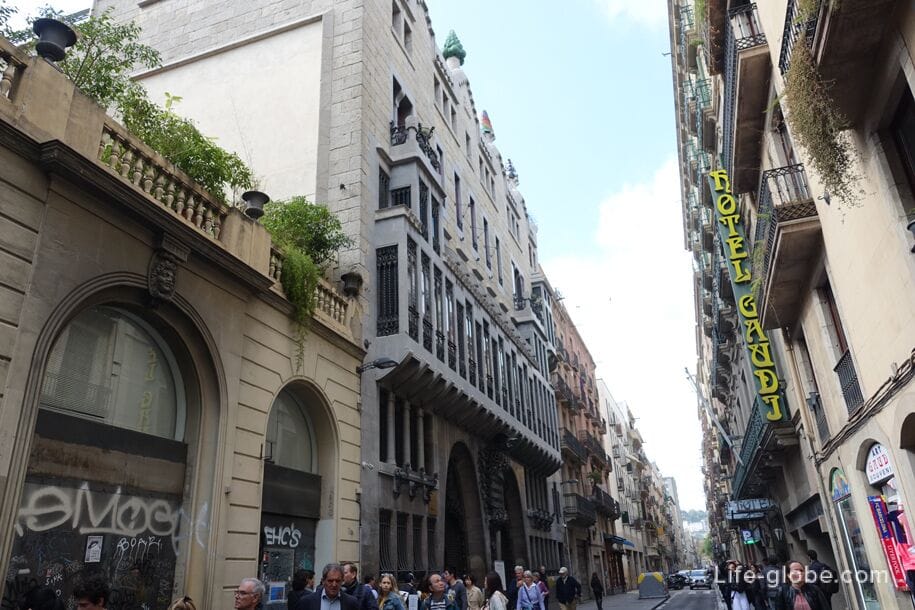
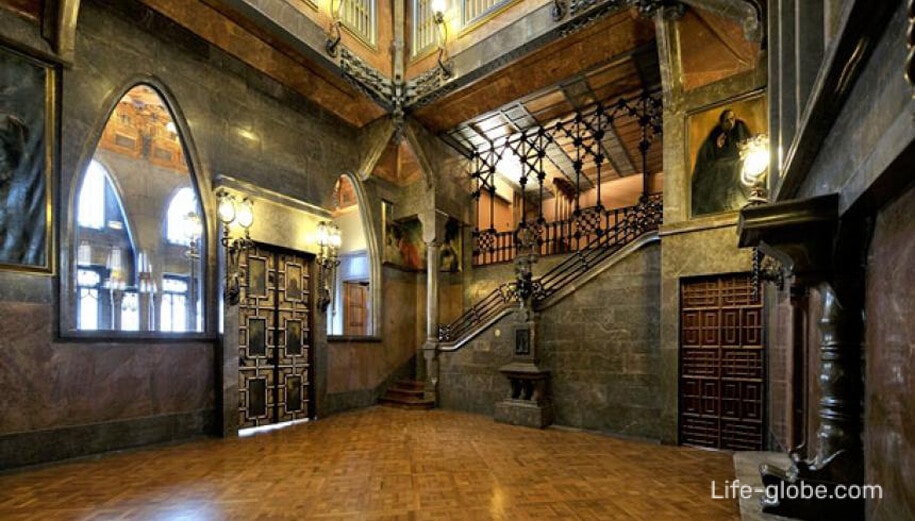

- The monastery of Sant Pau del Camp (Antic monestir de Sant Pau del Camp) is a former Benedictine monastery, which is one of the oldest churches, as well as a masterpiece of preserved Romanesque architecture in Barcelona.
Translated, the name of the monastery "Antic monestir de Sant Pau del Camp" means "Saint Paul in the countryside" or "in the fields".
Today, the church and the remains of the monastery can be visited. More about the monastery of Sant Pau del Camp...
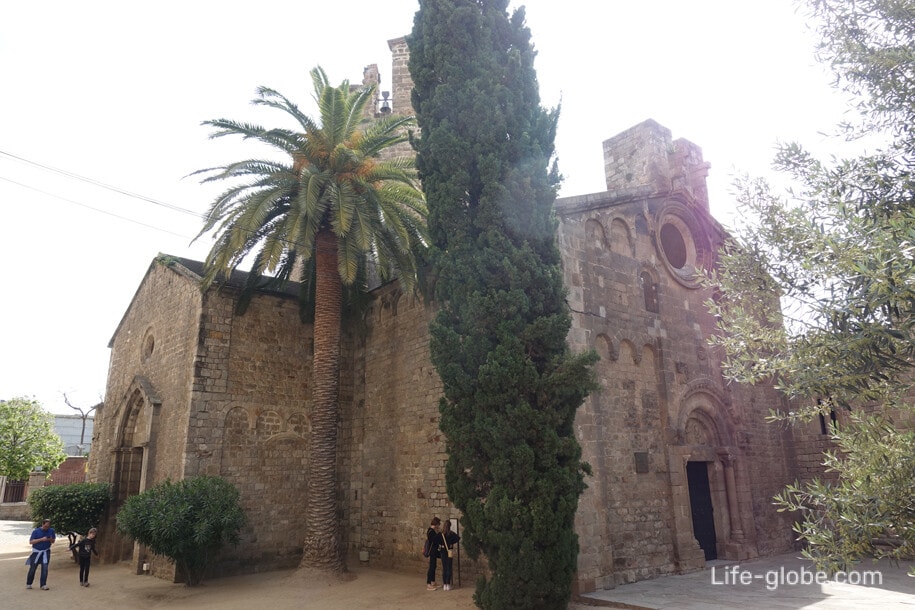
- "Raval the Cat" (Gato del Raval, El Gat de Botero / Gat Botero) is a bronze sculpture of a huge cat, the work of sculptor Fernando Botero.
It is this sculpture that is one of the recognizable symbols of the El Rawal district.

Close to the sculpture is the 4-star Hotel Barcelo Raval, on the roof of which there is a terrace with a swimming pool and 360-degree panoramic views of the surrounding area. Link to the hotel
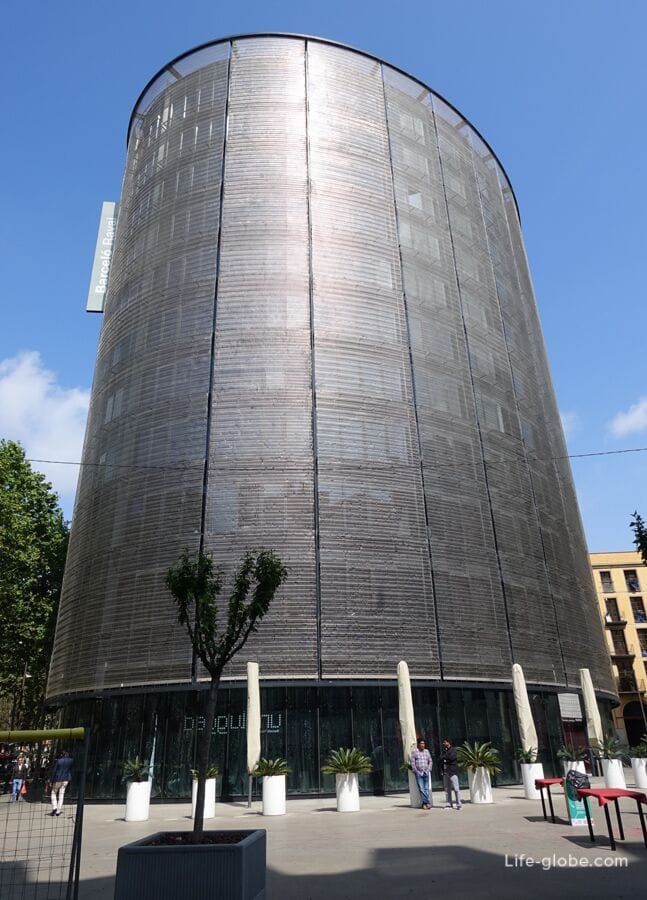
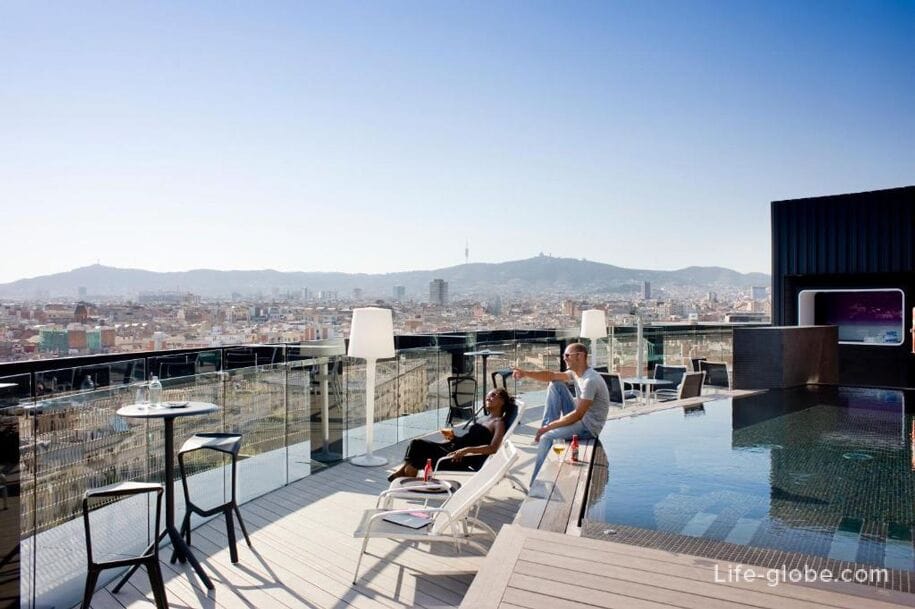
- the former Hospital of the Holy Cross (Hospital de la Santa Creu / l'Hospital de la Santa Creu), which is a historic complex of buildings with a courtyard with a garden, which now houses a public library, theater and artists' space in the former chapel of the hospital. More about the old hospital...
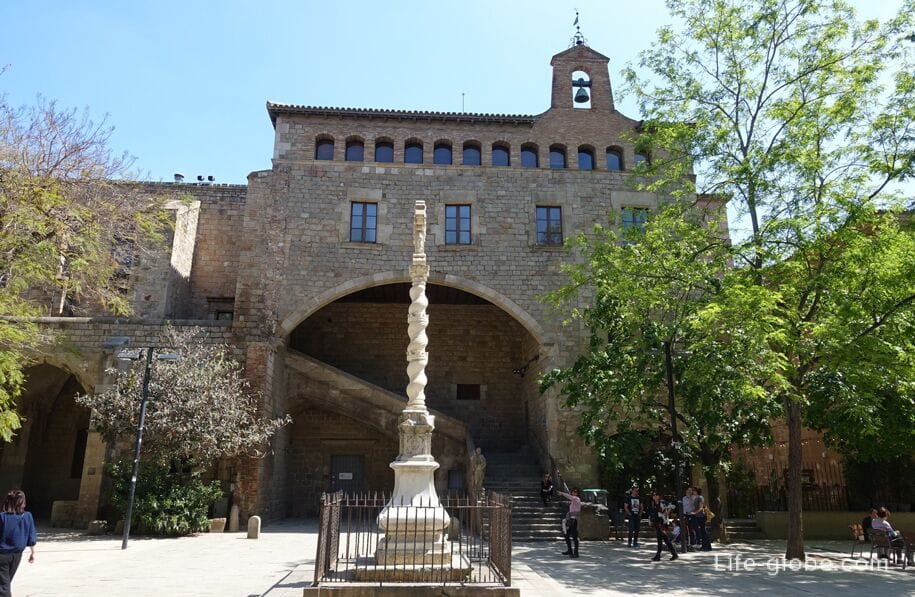
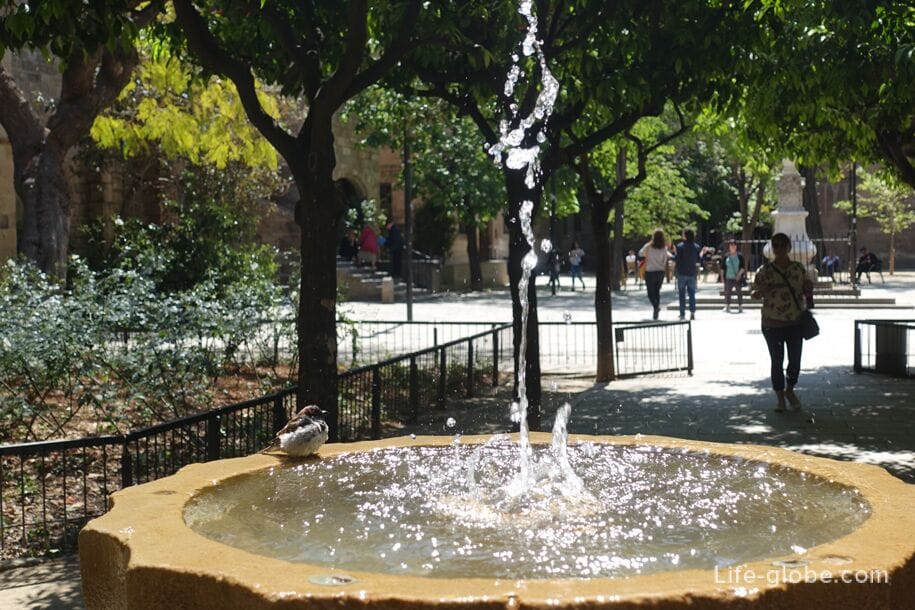
The Center of Culture and art of the Raval district are: the Center of Contemporary Culture of Barcelona (Centre de Cultura Contemporania de Barcelona) andThe Museum of Contemporary Art (Barcelona Museum of Contemporary Art), including the former monastery of the 16th century Convent dels Angels. More about the El Raval subdistrict...

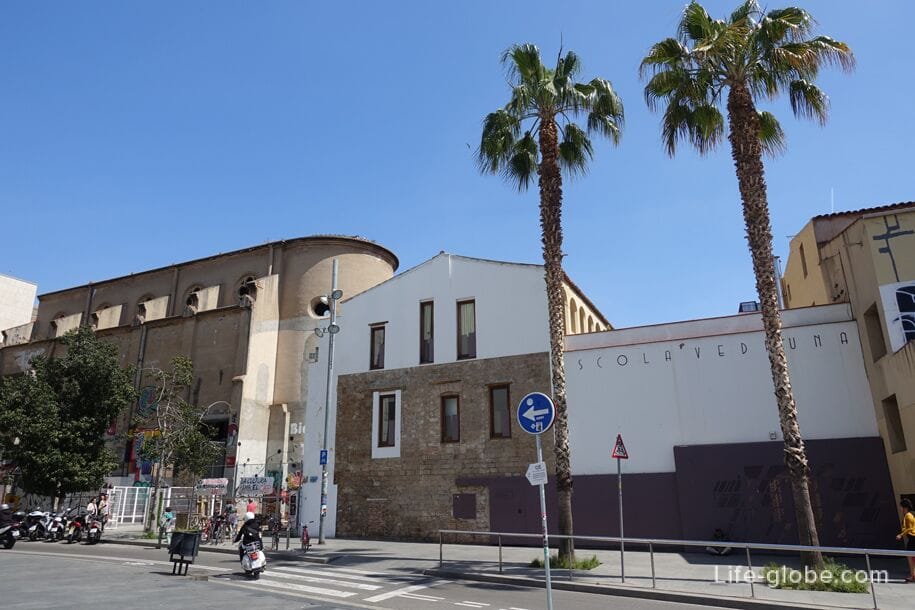
Barcelona Old Town on the map
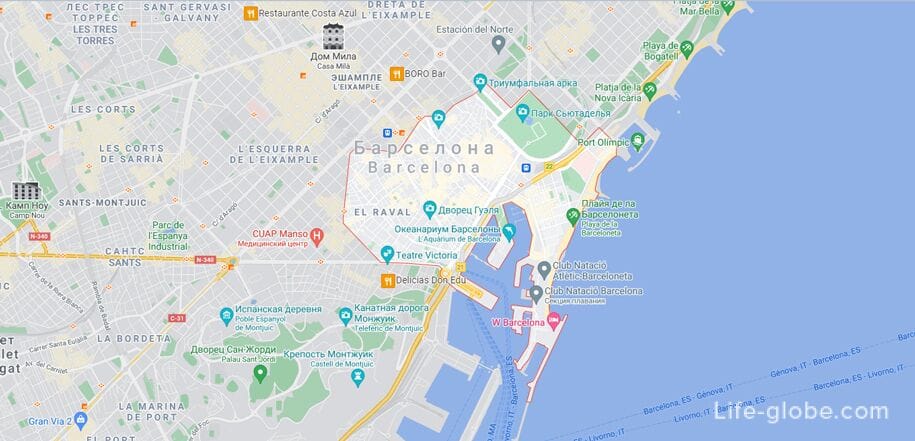
All accommodation facilities in Barcelona, including in the Old Town, near beaches and more remotely from those, can be viewed and booked here




